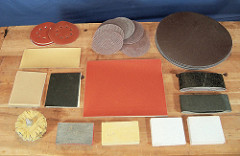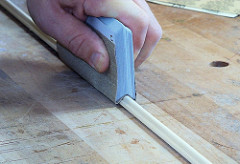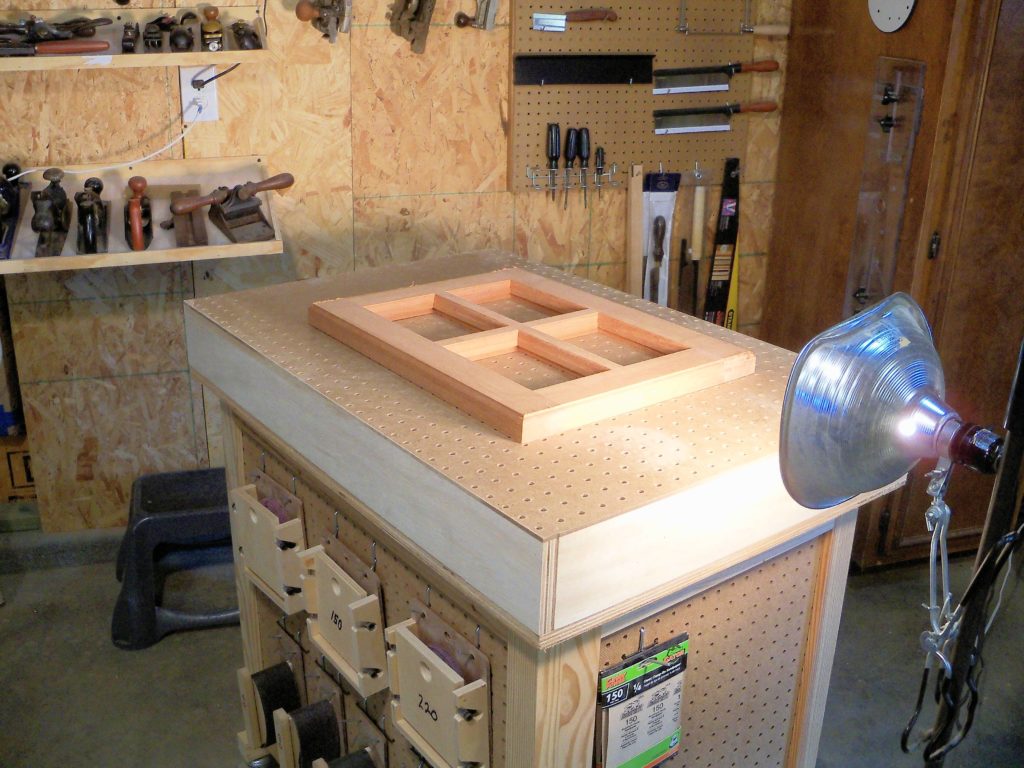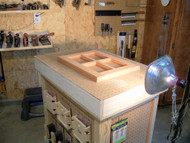An Interview with RJ Part 2
04 16 2012
In the last blog post, we had RJ Stroman, owner of 2Sand.com in the hotseat answering some common sanding questions. We continue that conversation in this post!

Question: I notice that there are different materials used as abrasive (silicone carbide, garnet, etc) should I be using different materials for different tasks?
Yes! Different abrasives actually leave different scratch patterns. For example, aluminum oxide tends to leave sharper peaks and valleys when the scratches are viewed under a microscope. This creates a finish with more sheen than, say, silicone carbide which leaves sharp peaks but more rounded valleys. Light refracts differently from the two surfaces, so the sheen is different.
 Question: There are also several choices for the backer that the abrasive is bonded to. How much does this matter to the sanding I am doing?
Question: There are also several choices for the backer that the abrasive is bonded to. How much does this matter to the sanding I am doing?
I can matter a lot. Sometimes it is obvious: If you try to wet sand with a paper backed sheet, you’ll have a big mess in no time! But other situations may be more subtle. If you want to use some sort of detail sander, then a thin, flexible backer will conform better than a thicker one and give you better results. High stress applications like belt sanders require much more durable backing. You want to try and match the grit and the backer to the work you need to do. Unfortunately, you are not likely to find the combinations you want at the local hardware store.
Question: Other than the mess, does good dust collection improve the quality of my sanding?
Absolutely! As you sand, particles are being removed from the surface being sanded. In addition, a few grains of abrasive may also fall off the backer. Both of these can leave random scratch patterns on your surface, when what you really want are tiny scratches that are very uniform in depth and width. Good dust collection removes these rogue particles and helps keep the scratch patterns uniform.
Question: Sometimes my project looks and feels perfectly smooth, but as soon as I apply stain or paint, scratches show up. How can I see these before finishing?
There are two useful techniques for checking the finish; First, while you are sanding, a strong light mounted at a very low angle to shine across the surface will show you most of what you need to know Any random scratches will show up quite readily this way. As a final check, you can wipe mineral spirits on the sanded surface prior to finishing. This will show you how the surface will look under a clear finish, and any random scratches will darken just as they would if you applied finish.
I certainly invite you to add your thoughts or send along questions that you may have. Please feel free to add your comments here on the blog, on our Facebook page, or via Twitter. Let us know what you think! -2Sand.com

